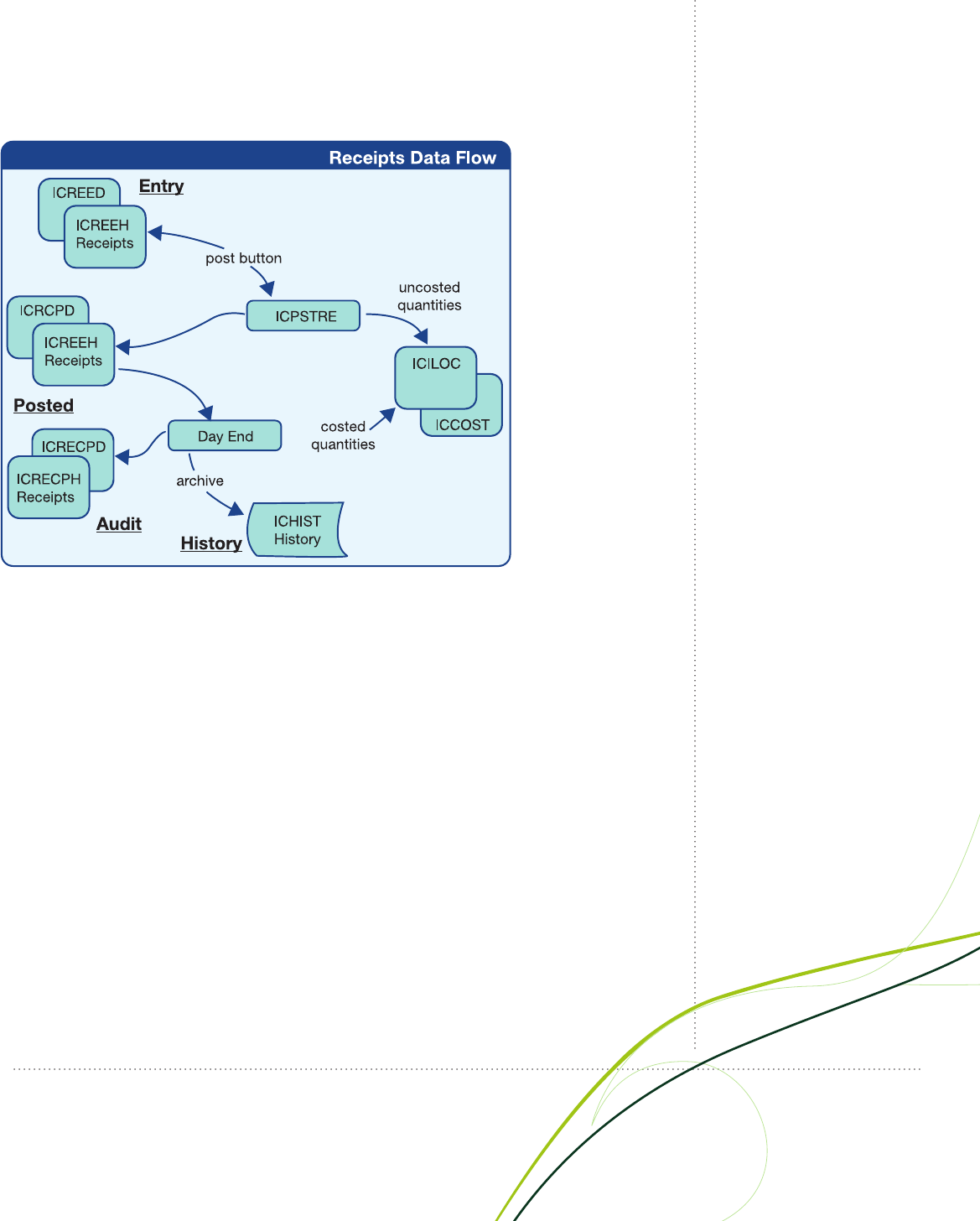User Guide

Understanding the Benefits of the Sage Accpac ERP Architecture
11
Sage Accpac ERP
Technology
Object-Oriented Design
Sage Accpac business logic is implemented as a collection of more than 750 objects that
communicate with one another in a common object repository. As an example, Figure 5 shows the
objects that are involved in receiving inventory items and the messages that they pass to one another.
ICREED
ICRECPD
ICRCPD
ICREEH
Receipts
ICRECPH
Receipts
ICREEH
Receipts
ICPSTRE
Day End
Entry
Posted
Receipts Data Flow
post button
archive
uncosted
quantities
costed
quantities
Audit
History
ICILOC
ICCOST
ICHIST
History
Figure 5—Sage Accpac business logic objects are implemented on a common communications framework and
are implemented by “major” function. This communications framework ensures consistent interaction among all
objects, and the “large” object size allows complete business functions to be referenced, which provides easier
customization by third parties.
Embracing Industry-Standard Technology. A well-implemented set of objects behaves in
a consistent and uniform way (follows protocols). The objects are constructed from a common
“template”—business logic that all objects share and that ensures that protocols are consistent. If
new protocols are necessary, it is usually possible to simply change the common template and re-
create (“re-instantiate”) all objects with the enhanced template. New protocols are used to connect
to new technologies and standards. This organization creates incredible leverage. To make all Sage
Accpac objects behave as .Net objects requires only that the core protocols are .Net enabled. To
make all Sage Accpac objects XML enabled requires only that the core protocols are XML enabled.
We can continue: Every single Sage Accpac business logic object can be driven by VBA; every
single business logic object is Internet accessible through the Sage Accpac SOAP Web Service;
every single Sage Accpac table can be exported or imported. With today’s constant introduction of
new technologies and standards, the consistency and uniformity of an object-oriented design is a key
element of any architecture.










